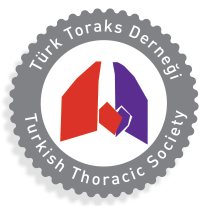Abstract
Abstract
Cough is one of the complex reflex mechanisms which plays role in clearing and protecting of the airways from secretions, irritants, foreign particles etc. It arises from variety of sensory nerves located in main carina primarily and other bronchial branching locations in trachea-bronchial tree and larynx with inflammatory, mechanical or chemical impulses. Rapidly adapting receptors (RAR), slowly adapting stretch receptors (SAR) and C fibers are three types of receptors basically involve reflex mechanisms of cough. A cough that lasts for over eight weeks is called as a “chronic cough” and there are several causes of chronic cough. In such patients who are never smoked, free from exposure to environmental irritants, with normal chest radiograms and pulmonary function tests; coughvariant asthma, upper airway cough syndrome and gastroesophageal reflux disease are the most common causes of cough. Advanced age, female gender, ACE inhibitor, antihypertensive drug and tobacco use, chronic diseases, viral infections, autoimmune diseases, atopy, presence of gastroesophageal reflux enhances the cough reflex sensitivity and combination of those factors could make cough worse and lead to the chronic pattern.



